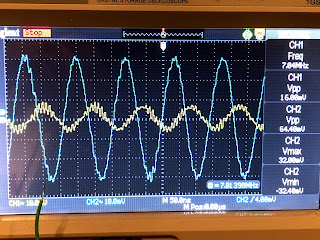Along the lines of making an SSB, I thought using bi-directional amplifiers would simplify things (as in the BitX). I decided to make them termination-insensitive as in W7ZOI's design. As I would end up making several of these, and they seem pretty useful building blocks, I decided to dip my toe into PCBs for the first time.
I decided to try JLCPCB, as they have very inexpensive prices *and* I could get them manufactured there, which would allow me to make them smaller and use small SMT parts that I wouldn't normally use (as by the time in the day I can work on my projects, my eyes do not like that...)
I got some really great advice on the EEVBlog forums. For one, I found searching through the available parts *really* hard, and someone suggested this project that scrapes JLCPCB's parts list and presents a *much* nicer search interface. One of the main things is it is much easier to find "basic" parts, which don't cost you more to add ("extended" parts cost $5/part since someone has to manually load them).
I used EasyEDA and followed one of Electronoobs YouTube tutorials. After some back and forth on the design based on feedback from the forums, I ended up with this:
Very pleased. Hooking it up and measuring it on the oscilloscope (into a 50 ohm load), it looks like I am getting 12-13dB voltage gain at 7Mhz from around 10mV up to 272mV without distortion. I need to go back and look at my notes - seems lower than I was expecting. Also want to measure with the NanoVNA (for bandwidth) and the TinySA (for harmonics). But that will probably need to wait for another day. Here are a bunch of pictures:












